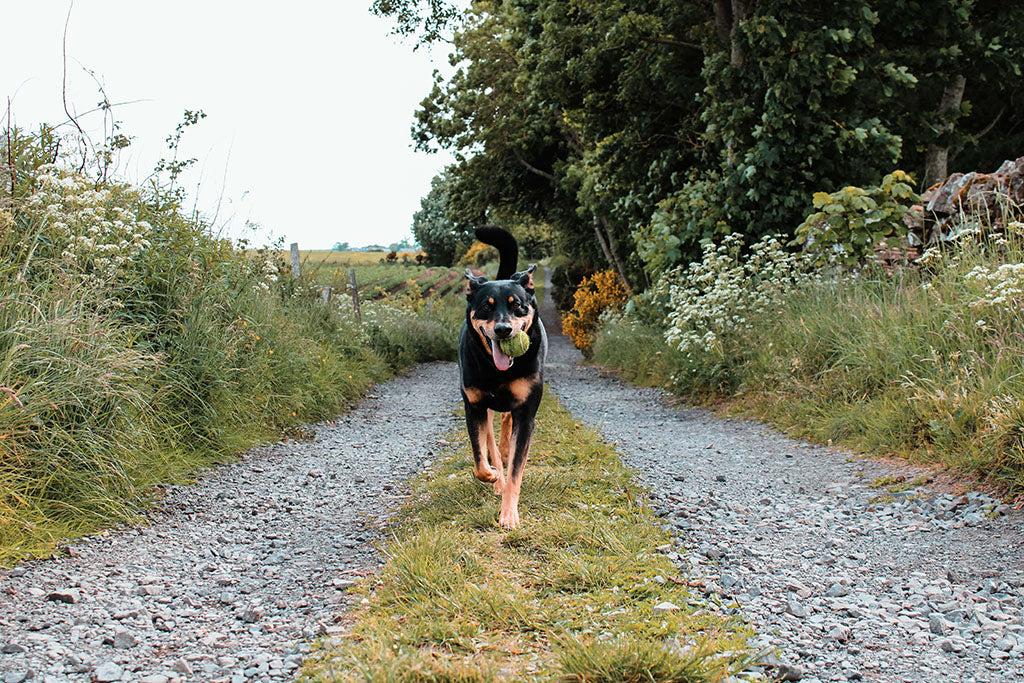Summary: In this blog, we’ll learn why positive reinforcement training is so effective when it comes to training a dog. We’ll discuss how it works, why it works, and why punishment for bad behavior is not as effective… Positive Reinforcement Dog Training Reward-based training is renowned for being an incredibly effective form of training a […]
Why Does Positive Reinforcement For Dogs Work?

Summary: In this blog, we’ll learn why positive reinforcement training is so effective when it comes to training a dog. We’ll discuss how it works, why it works, and why punishment for bad behavior is not as effective…
Positive Reinforcement Dog Training
Reward-based training is renowned for being an incredibly effective form of training a dog. Positive reinforcement is when you give your dog a “reward” for performing a behavior when instructed or desired. The reward can range from a positive vocalization, a treat, or a pet.
Your dog will learn to associate a behavior with a reward. For example, if they do their toileting outside, they may get a treat or if they “sit” when asked they’ll be stroked and made a fuss of, which dogs usually love! Cause and effect – which dogs don’t generally have a great grasp of – is entirely clear for them to understand with positive reinforcement dog training.
Positive reinforcement for dogs is also a great way of instilling confidence and happiness in a pooch too. It will enhance your bond with them and ensure their trust in you – they’ll try new things whilst seeking your direction and approval.
It’s not only deemed the most effective form of training for dogs, but it’s also the fastest and why it’s used so widely in the training of police dogs, guide dogs, and other service dogs.
However, in the world of behavioral science, the word “positive” is used to indicate whenever you’re giving something to your dog and “negative” is used when the owner is taking something away. So, you can also positively punish a dog which could be yanking them on their leash if they pull or lunge on a walk, or physically bopping them on the nose if they bark at guests.

The Negatives Of Positive Punishment
What’s a good thing to take from this terminology though, is that if that’s confusing to you, then imagine how confusing that is for a dog, which is why positive punishment doesn’t tend to work. As mentioned above, dogs simply don’t understand the concept of cause and effect which humans instinctively do – we actively watch young babies learn about consequences every day.
Punishing a dog doesn’t work because they can’t connect the fact that their “bad” behavior is resulting in their punishment. They just assume their master is being horrible to them for no reason, and they will learn to be scared of them, which no loving pet parent wants!
Rubbing their nose in their mess if they have an accident in the house, or yelling at them when they dig up the yard doesn’t make sense to a dog in the way that it may make sense to us. The result of positive punishment is simply a stressed-out dog. They also may attempt to defend themselves or lash out aggressively if frightened of the positive punishment enough.
Relying on positive punishment as a training method in your home can drastically lower your dog’s confidence and impair your bond by reducing their trust in you. It in no way helps them understand you are the alpha, which is a common misconception.
This understanding is widely acknowledged by professional dog behaviorists and veterinarian professionals worldwide. Positive reinforcement is the best bet when it comes to training a dog, and punishment is to be avoided. If your dog does do something wrong or naughty, ignoring them is the most effective way of communicating to them that you are not happy; effectively keeping a reward from them – otherwise known as negative punishment.
Any tutorials or videos online of alleged dog behaviorists trying to justify why positive reinforcement doesn’t work are simply not acting in the best interest of the dog. To stress again, positive punishment is cruel and ineffective and if a self-titled dog behaviorist advertises this way of training, avoid them at all costs.

Positive Reinforcement For Dogs
Starting to implement positive reinforcement dog training is actually really simple. Think about the behaviors you want to see in your dog, and every time they do it, reward them with their favorite treat! And yes, you can actively train with the method too, like when teaching them to “sit”, “stay” or “fetch” or trying to get them to learn a new trick, like spinning around. Or, you can use reward-based training to redirect an unwanted behavior like excessive following or barking at the doorbell.
Training a dog is most effective in 10-minute bursts every few hours. So, after the first 10 minutes, take a break and then return for another 10 minutes an hour or two later. Do this over a couple of days to help them digest and embed the behavior, and then keep returning to it regularly throughout their day-to-day life for as long as they’re physically able to perform the instruction. For example, some dogs with joint conditions later in life, may struggle to “sit” and “stand” on command as often as they used to.
Consistency is key with positive reinforcement training. However, try to use a variable routine of when you train so they don’t learn a pattern, and be sure to only focus on one behavior at a time per training session, so as not to confuse them.
Remember, your dog only wants to make you happy – they never want to make you sad. So, if they slip up during training, know that they really don’t mean to. Simply don’t reward them, and try again until they get it right.
Be patient with them and kind – training is meant to be fun! Reward-based training can only enhance your relationship and life together, so embrace it optimistically. This will best benefit you and your pup.
Sources
“Positive Reinforcement Dog Training: Why It Works” Mad Paws,Oct 29. 2019 https://www.madpaws.com.au/blog/positive-reinforcement-dog-training/
 S
S



